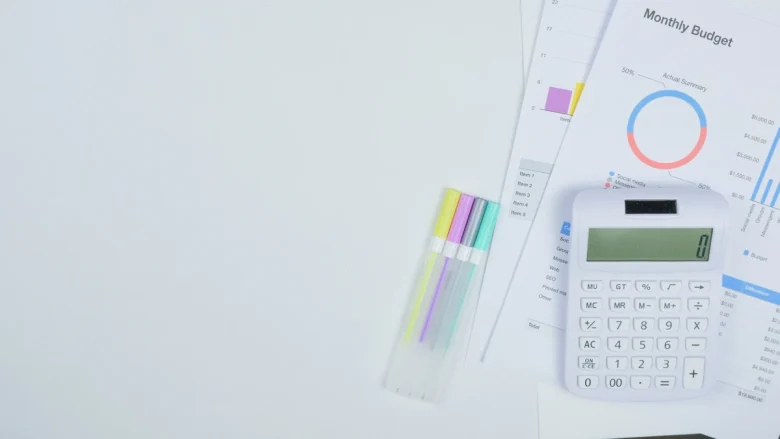Budgeting is one of the most important tasks for any organization, yet it is often overlooked or rushed. A solid operating budget ensures financial stability and strategic growth. Business owners can use it to plan ahead, manage resources, and avoid financial surprises. A healthy operating budget is essential for both start-ups and established businesses. The steps in this tutorial will help you create a budget that aligns with your business goals.
Financial Data Collection
All financial information must be collected before a business budget can be created. This includes historical balance sheets, income statements, and cash flow statements. If your business is new and lacks historical data, market research and industry-specific financial reports can be helpful. Data on past revenue trends, seasonal fluctuations, and a history of your expenses can give you insight into your financial situation and help you make accurate estimates. The first step is to make sure your budget is based on facts, not guesswork.
Identify Fixed and Variable Costs
An effective budget requires insight into your expenses. First, divide your expenses into fixed and variable costs. Fixed costs are ongoing, regardless of the business activity. Examples include rent, wages, and insurance. However, variable costs, such as raw materials, utilities, and transportation, vary with revenue and production. By clearly distinguishing between necessary and variable costs, you have flexibility when it comes time to cut back or reallocate resources.
Forecasting Sales and Revenue
Once you know your expenses, you can predict your sales and revenue. Accurate forecasting requires historical sales data, market trends, and the likelihood or difficulty of growth. Consider seasonality, product launches, and consumer demand. Forecasting software can be helpful for your industry. Keep in mind that overly optimistic sales projections can lead to overspending, while excessively conservative estimates can hinder growth.
Profit and Loss Budget
A profit and loss (P&L) budget, also known as a P&L budget, forecasts your revenue, expenses, and net profit per month or quarter. This budget shows whether your business is profitable or losing money. Include all sources of income and expenses, both direct and indirect. A profit and loss budget provides insight into the financial health of your business and helps you improve profitability.
Cash Flow Budget
Every business relies on cash flow. Managing cash flow is therefore crucial. A cash flow budget ensures that you have enough money for your day-to-day operations. In this budget, the timing of cash flow is prioritized over profitability. This includes customer payments, loans, wages, rent, and supplier expenses. By taking cash flow shortfalls into account, you can obtain short-term financing or change your payment plan to maintain a healthy liquidity balance.
Capital Expenditure Budget
Your capital expenditure (CapEx) budget outlines your long-term investments in equipment, technology, and real estate. These large investments can impact your cash flow for years to come. When creating a capital expenditure budget, prioritize assets that align with your business goals and evaluate the return on your investment. Upgrades to production equipment can reduce production costs, while CRM software can increase revenue. The budget aligns capital expenditures with growth plans.
Budget Review and Revision
Budgets should be reviewed and updated regularly. Quarterly or monthly reviews allow you to compare financial performance to forecasts. Variances in the budget can indicate development potential or urgent problems. Compare actuals to forecasts to identify trends and draw conclusions. Always be prepared to adjust your budget based on unexpected expenses, economic trends, or consumer behavior. Flexibility is needed to maintain a realistic budget.
Budget Execution and Performance Monitoring
The final phase is budget execution and performance monitoring. Discuss the budget with your employees and explain their responsibilities to stick to it. Use financial software or dashboards to monitor progress and generate reports. Regular meetings ensure that the team is accountable and sticking to the budget. Monitoring performance helps you stay on track and plan for the future.
FAQs
1. Why is a business budget important?
A business budget helps allocate resources effectively, plan for the future, and anticipate potential financial challenges. It provides a clear roadmap for achieving business goals and maintaining financial stability.
2. How often should I review my business budget?
It’s recommended to review your budget monthly or quarterly. Regular reviews allow you to address discrepancies and adjust for any unforeseen changes in expenses or revenue.
3. What tools can I use to create a budget?
There are various tools and software available for budgeting, including QuickBooks, FreshBooks, and Excel spreadsheets. Many of these offer templates and features to simplify the budgeting process.
4. What should I do if my expenses exceed my revenue?
If your expenses exceed your revenue, review your variable costs to find areas where you can cut back. Additionally, explore ways to increase revenue, such as launching new marketing campaigns or diversifying your product offerings.
5. Can a small business have a simple budget?
Absolutely! A simple budget can be as effective as a detailed one. Focus on tracking income, expenses, and cash flow. Use available tools that match the scale of your business for easier management.




